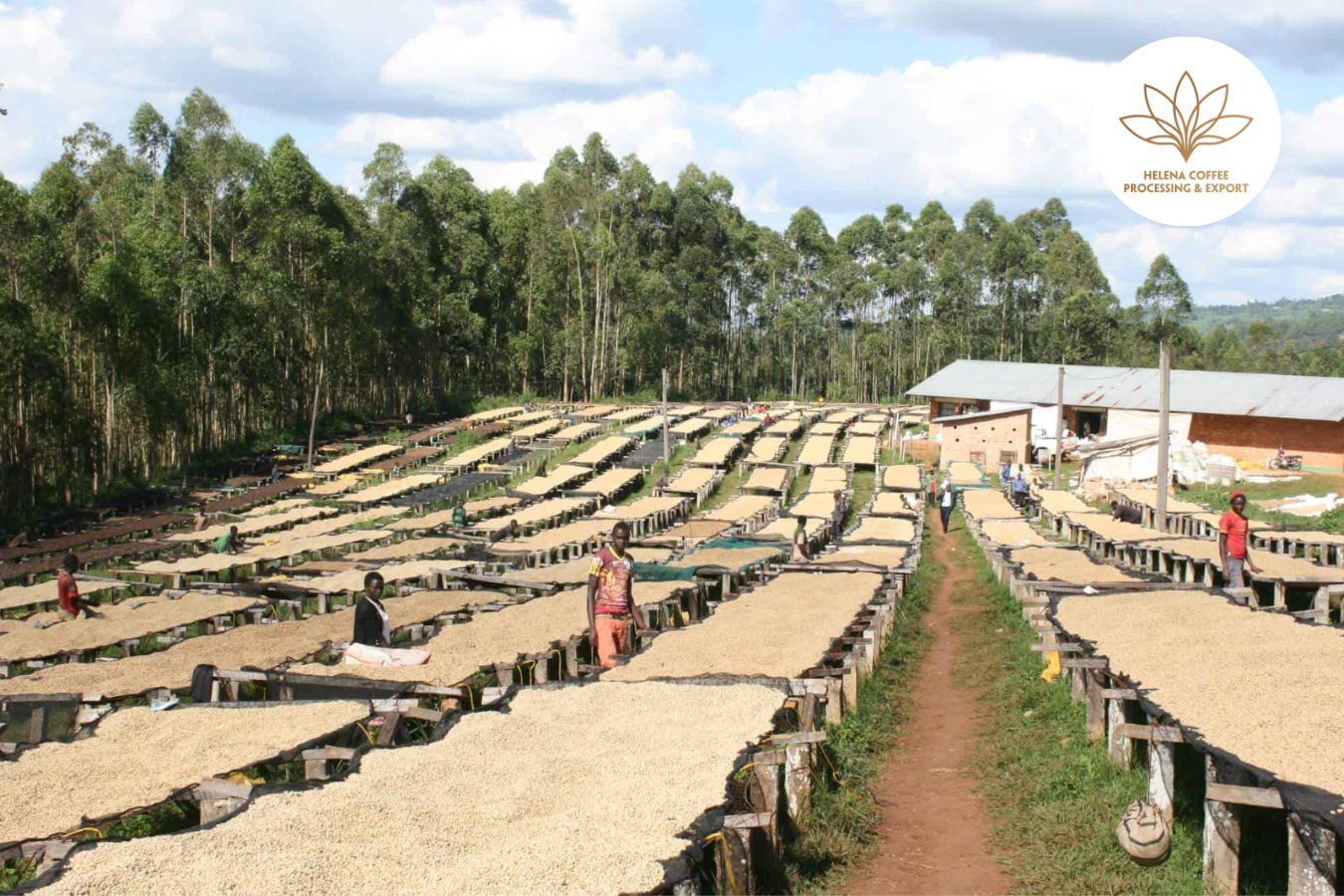
Overview Of Rwanda Coffee From Africa: Like most coffee-producing countries in Africa (except Ethiopia ), the coffee crop arrived in Rwanda during the Belgian colonial period (Belgian). Until 1999 the Rwandan coffee production was still labeled as poor quality.
Rwanda is Africa’s ninth largest Arabica coffee producer, with around 400,000 farms. And they were known for many varieties of Single-origin coffee. It is a “revolutionary” step for the Rwandan coffee industry. Learn more about Rwanda coffee with Helena!
Difficult history
By the 1930s, coffee had become an obligatory crop in Rwanda, similar to the Belgian colonial approach in neighboring Burundi. The Belgians tightly controlled exports and levied high taxes on the growers.
This has pushed Rwanda towards mass production of low-quality coffee sold at low prices. The minimal infrastructure allows the production of quality coffee, not even a single wet processing station.
In the 1990s, coffee was Rwanda’s most valuable export, but the decade’s events soon ruined the economy. In 1994, the widespread genocide in this country claimed the lives of nearly a million people, plus the drop in worldwide coffee prices to a deficient level, which plunged the coffee industry.
Coffee then became a positive symbol as Rwanda stood up from the genocide. With aid from abroad, the country has focused on the coffee industry. Processing st are built to consolidate resources towards producing higher quality coffee.
The government has become more open to the coffee trade, and specialty coffee buyers worldwide have expressed considerable interest in the country’s coffee. Rwanda is the only African country to have hosted a Cup of Excellence – a competition to find the best batches of coffee and put them on the auction market.
The recovery of the Rwandan coffee industry
The first washing station was built in 2004 with support from the United States Agency for International Development (USAID). Following this, the number has grown dramatically – with around 300 stations in recent years.
In addition, the PEARL ( Partnership for Enhancing Agriculture in Rwanda through Linkages ) project, Partnership for Advancement of Agriculture in Rwanda Through Linkages, has been successful in helping to spread knowledge and train young agronomists in Rwanda.
Rwanda is known as the ‘Land of a Thousand Hills,’ Indeed, the altitude and weather have supported the coffee crop. However, widespread depletion and transportation still pose challenges, often adding to the cost of production.
Coffee production in Rwanda
Coffee purchased from Rwanda can be traced back to processing stations with many farmer groups and cooperatives supplying them. Each household here has an average of 183 coffee trees ( James Hoffmann, The World Atlas of Coffee ), so it can be not easy to find coffee from a single producer.
Today Rwanda contributes less than 0.2% of the global coffee supply, but its reputation for coffee quality is undeniable. CafeImports compiled the following information in 2017:
Scale production:
- The population engaged in the coffee industry: Approximately 400,000 farmers.
- Average farm size: 1 – 4 ha.
- Annual export output: 130,000 bags (60 kg).
Rwanda coffee farming activities:
- Popular coffee varieties: The main ones are Arabica Bourbon, French Bourbon, Caturra, Catuai, Mibirizi
- How to classify coffee: By floor size, with High Grade (on floor 16), Medium Grade (floor 15), and Ordinary (from floor 14 and below).
Most Rwandan coffee comes from the south and west, but five distinct production regions are there. The Virunga v volcanic area is located northwest (home to the famous Silverback mountain gorillas). To the west i the Kivu coffee region located along Lake Kivu. Move towards the center of the country. – famous for its relatively low altitude (1,300m).
Rwanda grows and exports small amounts of Robusta, but most of its production is fully wet-processed Arabica.
Specialty Coffee development orientation.
Despite this, Rwanda continues to face several challenges. As of 2016, the country’s fourth-largest export (worth $59.4 million a year). These are a recovery in Rwanda’s agriculture, especially as supply chain inequalities are resolved.
The Agricultural Export Development Board of Rwanda (NAEB) has defined their coffee strategy as “Positioning Rwanda as a Specialty Coffee producer, aiming to create the best conditions for the coffee sector to contribute to growth.” and prosperity of the country.” In particular, the key to the success of this goal is to focus efforts on improving production and processing.
However, one of the significant obstacles to the development of Specialty Coffee in Rwanda is a disease in Burundi coffee and the nearby Democratic Republic of the Congo.
Therefore, research into the possibility of removing defects or improving identification and grading techniques is the key to making Rwanda’s coffee a Specialty Coffee product line.
References:
- Primecoffea, Tổng qua về cà phê Rwanda Châu Phi, Tháng Bảy 29, 2017
- The World Atlas of Coffee: From Beans to Brewing – Coffees Explored, Explained and Enjoyed book by James Hoffmann
- Origins Coffee – Resource: www.cafeimports.com
- www.perfectdailygrind.com/ Perfect Daily Grind – A Roaster’s & Coffee Buyer’s Guide to Rwandan Beans -By Gisselle Guerra